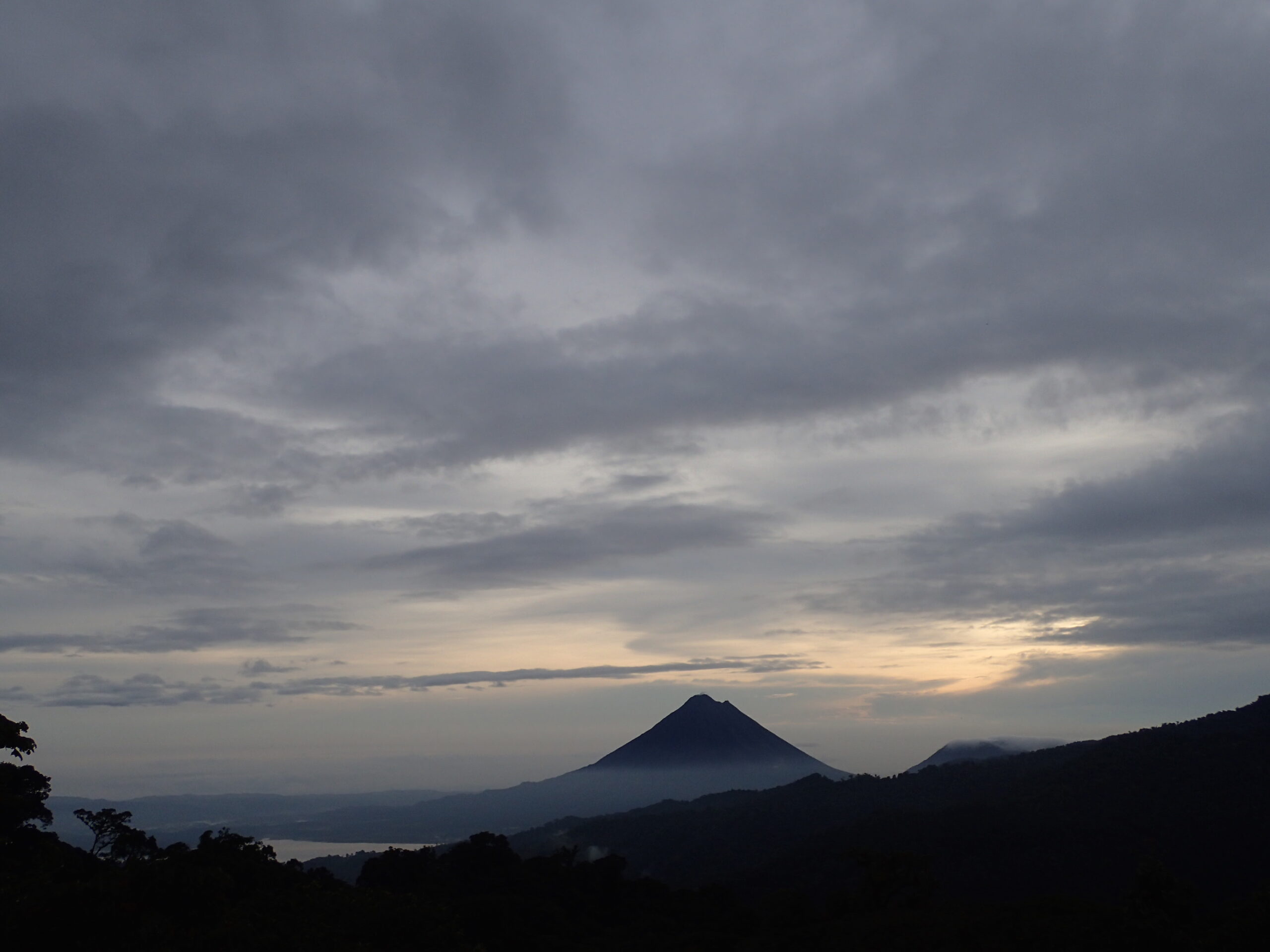
Anuran Diversity in Edge vs Forest Habitats in San Luis, Costa Rica
Elizabeth Shaffer1 & Amanda T. Rugenski1
1Odum School of Ecology, University of Georgia
Introduction
- Neotropics contain at least 44% of global anuran diversity (Duellman, 1988).
- Amphibians are the most threatened vertebrates, and in the Neotropics, populations may experience declines up to 75% in some upland areas (Catenazzi et al. 2015).
- Declines are mainly due to habitat alteration, climate change, and disease.
- These declines are altering ecosystem structure and function (Rantala, et al., 2015).
- During land use conversion, edge habitats are created, and environmental variables may differ in edge vs. forest habitat, which can affect community diversity (Cubides and Cardona, 2011).
Question & Hypothesis
Question: How does anuran diversity differ between edge and forest habitats?
Hypothesis: We predicted that anuran diversity would be higher in the forest habitat than in the edge habitat, because it is undisturbed and does not have altered and variable environmental factors associated with edge habitats.
Methods
- Study site: CIEE’s campus near San Luis in Monteverde, Costa Rica
- Established a 500m transect in an edge (road) and forest habitat (Camino Real trail). Both shown in red in the map below.
- Employed visual and aural surveys during the day and at night.

Results
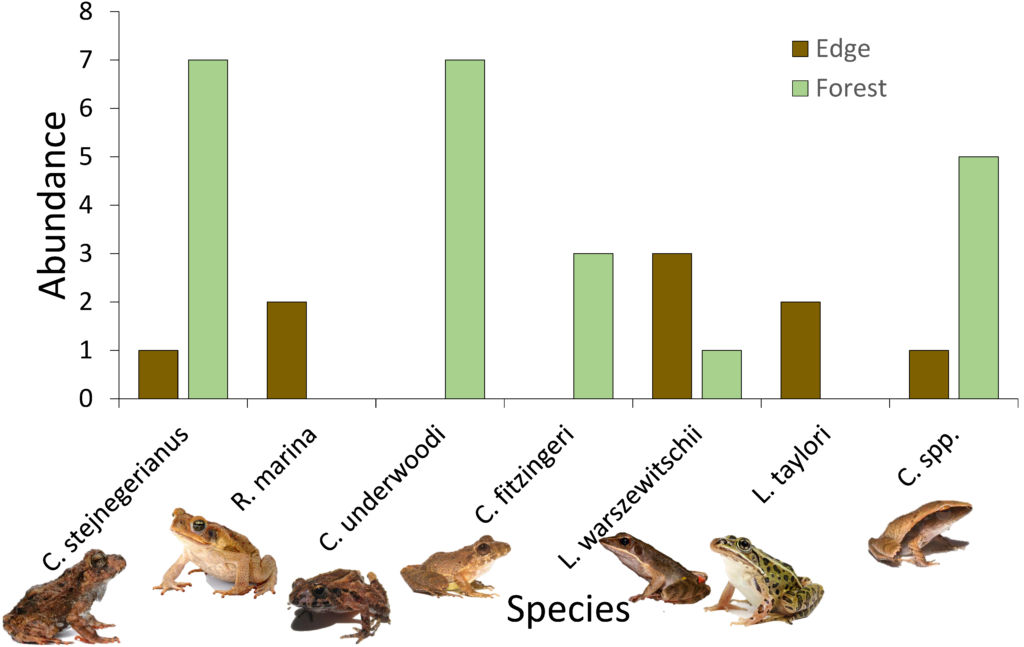
Overall, the forest habitat had a higher abundance of individuals (Figures 1, 2) and a higher species richness and diversity (Table 1).
Nighttime sampling yielded higher abundances (Figure 2) and a lower CPUE (not shown). Effort was not divided evenly between daytime and nighttime sampling (1 person during day; 2 3 people during
night).
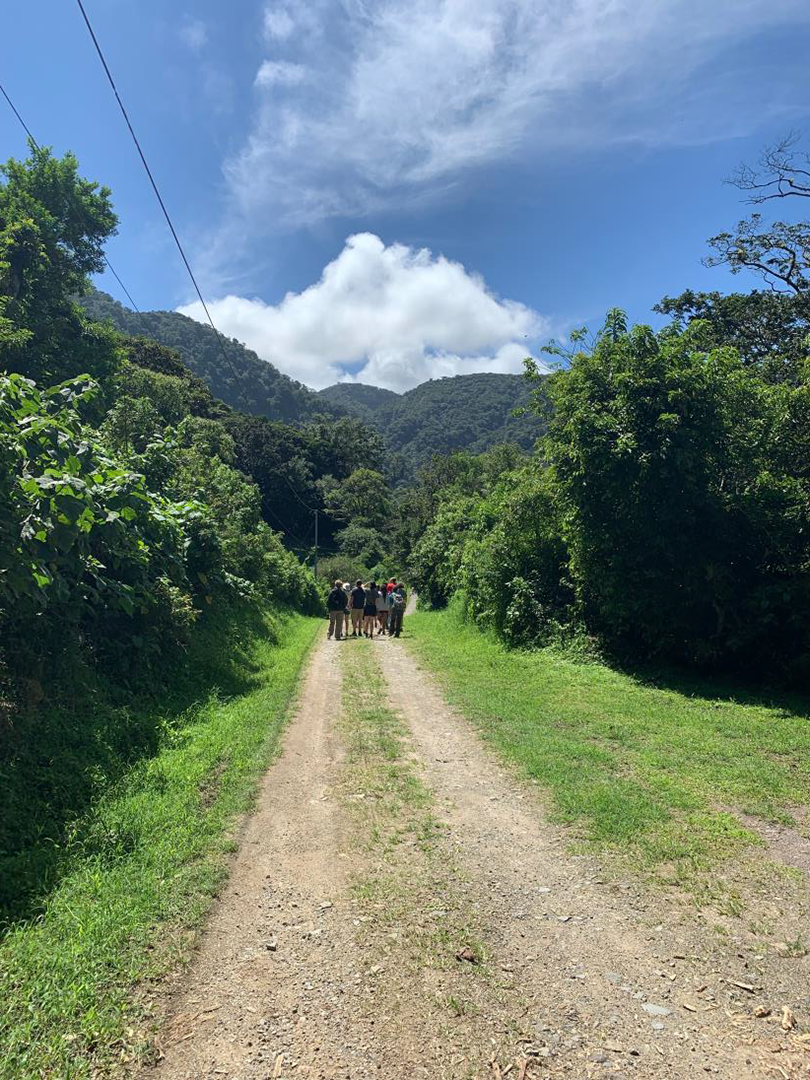
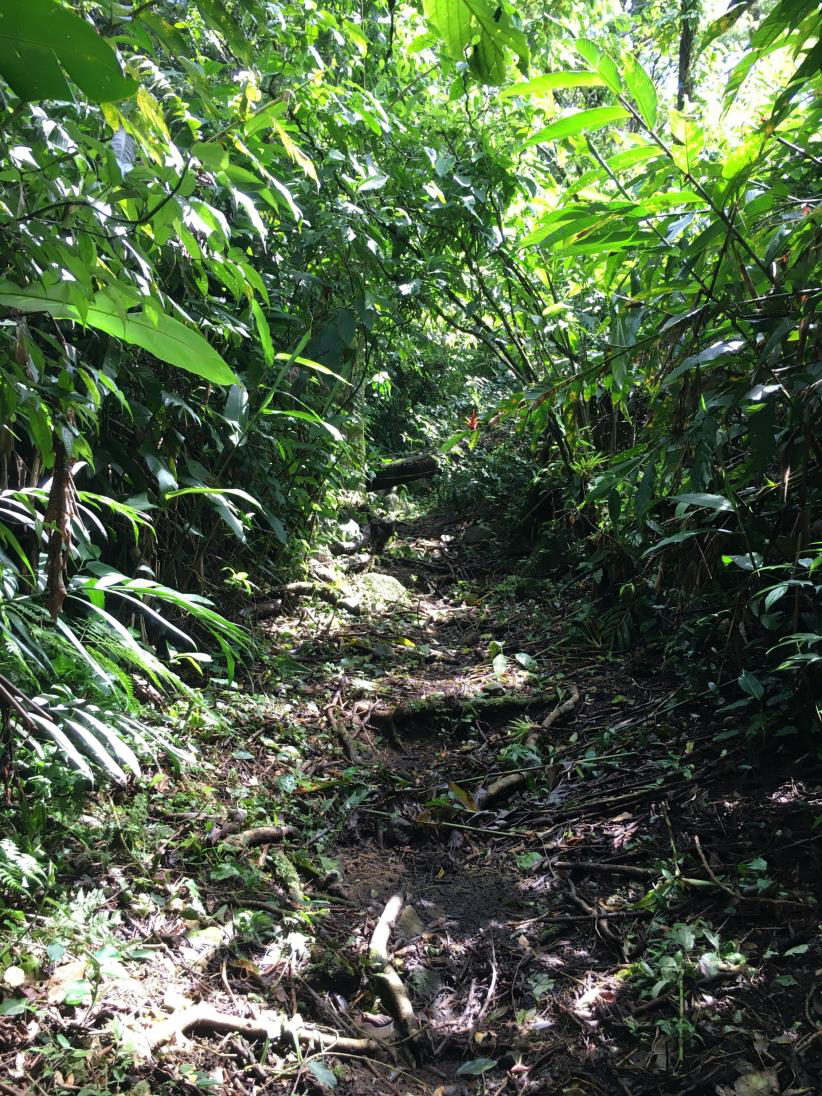
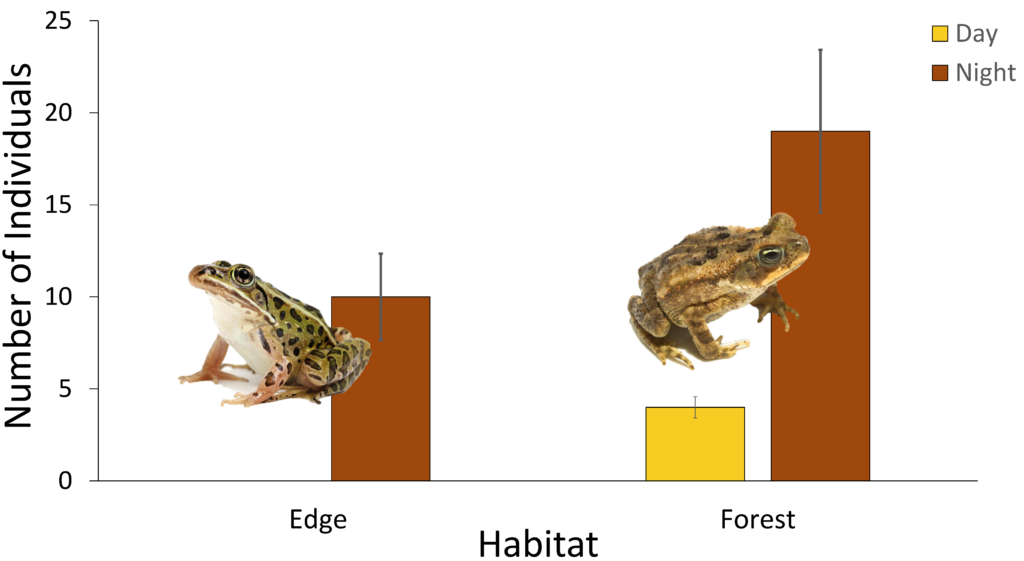
| Metric | Edge | Forest | Total |
|---|---|---|---|
| Species Richness | 4 | 5 | 6 |
| Species Diversity | 0.738 | 0.833 | 0.815 |
Discussion
- Results show that forest habitat was more diverse and species rich
- Differences in water availability may have affected which species were found in each habitat (standing/running water in edge habitat vs dry forest habitat), most likely depending on which species had a larval stage vs direct development.
- Highlights the importance of habitat diversity maintenance.
Future Work
- Standardize catch per unit effort for daytime and nighttime sampling
- Longer sampling window/sampling including sampling during wider variety of hours
- Separate study on effects of environmental variables such as rainfall or moon phase
- Our study was the first study to establish baseline transects and monitoring for long term anuran sampling at CIEE.
- With a changing climate, habitat alteration and disease it is important to monitor long term changes in communities to better predict and understand community dynamics.
Acknowledgements
Special thanks to the CIEE staff for allowing the use of their facilities for this research and to Moncho Claderon for help in identifying amphibian species.
References
Catenazzi, A., 2015. State of the world’s amphibians.Annual Review of Environment and Resources, 40, pp. 91-119.
Cubides, P., & Cardona, J. (2011). Anthropogenic Disturbance and Edge Effects on Anuran Assemblages Inhabiting Cloud Forest Fragments in Colombia. Natureza & Conservação , 1-8.
Duellman, W. E. (1988). Patterns of Species Diversity in Anuran Amphibians in the American Tropics. Annals of the Missouri Botanical Garden, 79-104.
Rantala, H. M., Nelson, A. M., Fulgoni , J. N., Whiles, M. R., Hall Jr., R. O., Dodds , W. K., . . .Connelly, S. (2015). Long term changes in structure and function of a tropical headwater stream following a disease driven amphibian decline. Freshwater Biology, 575-589.
Download Original PDF of Poster
